On Recording Phone Calls, Sharing Business Cards, and Jogging
May 14, 2018

It’s a special ops issue of Mobile Monday as we show you how you can record your phone calls on your iPhone or Android device. Then we’ll share a business card via iMessage and take up jogging to stay fit.
iOS Tip: How to Record a Phone Call
Sometimes you may want to record your telephone conversation and save it as an audio file for future use. You may need this feature, for example, if you regularly interview people over the phone. You will surely have discovered by now that iOS does not offer any standard tools for recording your phone calls. Luckily, there exist third-party solutions that will do the job. Today, we’ll tell you about two of them (alas, they are not free and cannot be installed locally).
- TapeACall
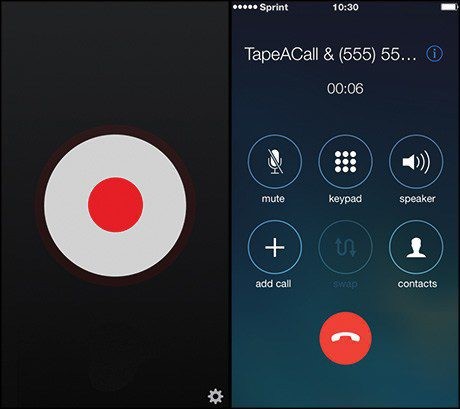
Using TapeACall, you can record incoming and outgoing phone calls of any length. Once the recording starts, you can monitor the process and keep it running in the background. You can go back to the app at any time by tapping its notification bubble. Recorded calls are saved to audio files on your device and can be shared with others via e-mail, Dropbox, Google Drive, Evernote, Twitter or Facebook. One word of caution, though: after the app was updated for iOS 11, it started to get bad reviews, so please be on the alert when trying it out, particularly when it comes to activating your free trial.
- Callwrite
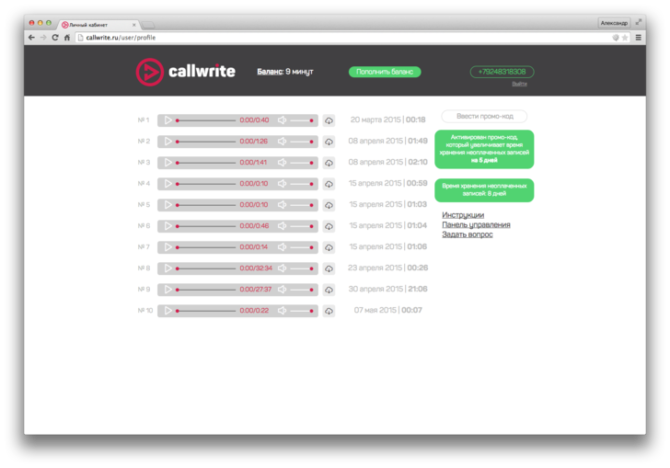
Callwrite is a call recording service originating from Russia. To record a call, you simply need to add the service as one of the participants. A couple of minutes after the call is ended, you will get a notification saying that the audio of the call is now available to you. The audio file will be stored for 72 hours. To listen to the call again or to download it onto your device as an MP3 file, you must log in to your account select a plan, and pay for the service.
Android Tip: How to Record a Phone Call
What makes Android so versatile is the infinite number of apps on Google Play that can be used to extend its capabilities. Some manufacturers of Android-based devices have already included a call recording feature into their adaptation of the operating system. Here’s our choice of top three call recording apps.
- Automatic Call Recorder
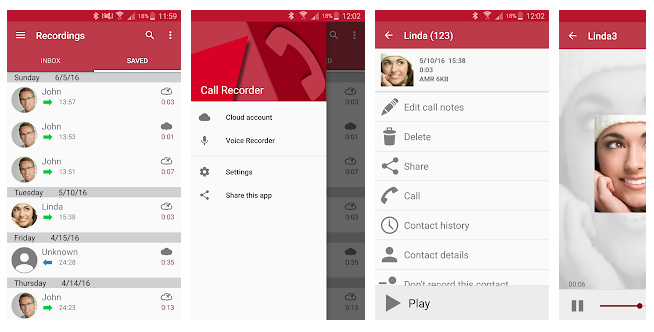
Besides saving your calls as audio files locally, you can also save them to Dropbox or Google Drive. This is handy if you want to be able to access these files from other devices as well. You can save to 3GP, AMR or WAV.
- Google Voice
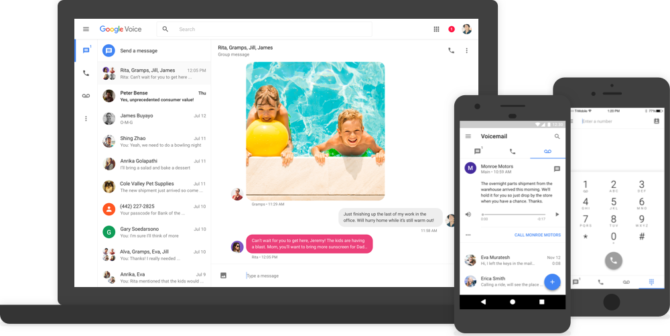
Be warned: Google Voice is only available within the US. The service allows you to record incoming calls. It’s free of charge, but you will need to register with a Google account.
- Cube Call Recorder ACR

Unlike the other apps in this review, Cube Call Recorder ACR will also record voice calls in Skype, Telegram, WhatsApp, Facebook Messenger, and Viber. Note that this feature may be unavailable on some devices. The most practical way to find out if your device is supported is to install the app and try it out.
By default, Cube Call Recorder ACR will record all calls, but you can add phone numbers to an ignore list.
Please remember to inform the other party that you’re going to record the call.
ABBYY Tip: iMessage for BCR
Did you know that you could send your business card from BCR iOS to new contacts using iMessage? When using iMessage for this purpose for the very first time, you’ll have to tweak a few settings:
- Open iMessage, go to conversations, and tap the App Store button next to the text box. At the bottom of the screen, you will see the icons of all the apps on your device that are allowed to be displayed in iMessage.
- If you don’t see the BCR icon, scroll to the last icon and tap More…
- Tap Edit.
- Add BCR to iMessage by flicking on the switch to the right.
- To add BCR to Favorites, tap the green “+” icon on the left.
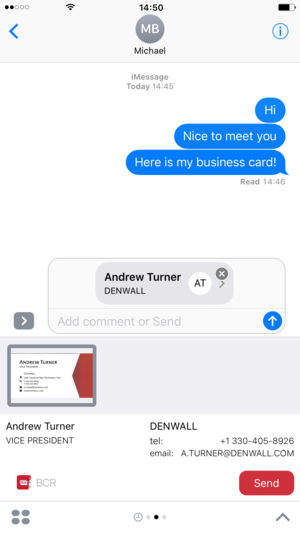
Now when you want to send a business card using iMessage:
- Go to the conversation, tap the App Store button next to the text box, and select BCR.
- Create a new business card or select an existing one from the My cards list.
The addressee will receive your card in VCF format and will be able to save it directly to their Contacts. Nifty!
App of the week: Does Not Commute
Does Not Commute is a simple driving strategy that can be very annoying at the beginning, as you will be punished for every bad tap. However, as you get deeper into the game you will become more tolerant of other people on the road.
Your task is to map routes for several cars within a limited time (you’ll have one minute at level 1). It’s not that simple—once you have created routes for some cars, they will immediately hit the road and will start driving to and from while you will be trying to provide directions for the remaining vehicles. For example, while you are trying to get your fifth car to its destination, the other four will be already on the road, making life miserable for the fifth driver, particularly if your directions are not exactly optimal.
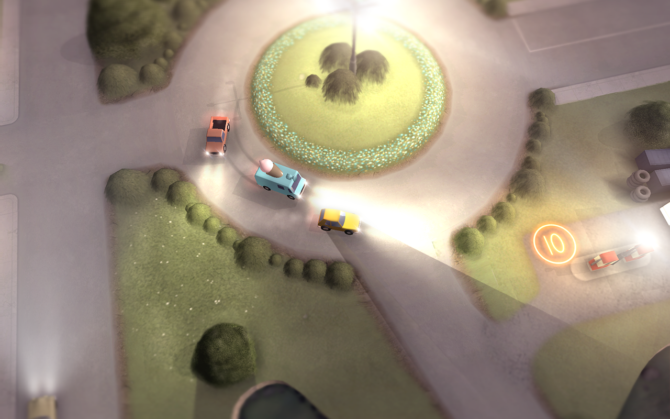
The action takes place in a small town in the 1970s, the townsfolk (i.e. the drivers) have their own quirks, strange hobbies, and skeletons in the cupboard, which you will discover as you progress in the game. Theoretically, you can get to the top level free of charge, but you’ll have to do it in just one try. Or you can pay USD 1.99 to be able to save anywhere at a checkpoint.
First-Hand Experience: Advice From a Colleague
By Sofiya Semenova, Head of Internal Communication and CSR

Spring is in the air and we are all tempted to spend more time outdoors. No more excuses for staying in. Why not mix fitness with pleasure, then? Jogging may be an ideal outdoor sport for many, as there’s no initial outlay on expensive sports gear and you can jog almost anywhere you like. Perhaps the hardest thing for many is making their first steps. But it’s not that hard, really. All you need is… well, run.
Now you have firmly decided to take up jogging you will obviously have some questions to ask.
What’s the best time of day to jog?
The best time is whenever is most convenient for you. Of course, planning is always good and it would make sense to allocate a regular slot to jogging in your diary. If you go for a run in the morning, be sure to warm up properly after sleep.
Some may find it harder to jog regularly in the evenings due to a busy day at work, meet-ups with friends, or general tiredness and “not feeling like it”. On the other hand, I know lots of people who run in the evening to unwind and relax.
Another popular approach is called “run commute”, i.e. jogging to and from work. The idea is that your commute is no longer a waste of time and running serves its original purpose—getting from point A to point B. You will also be able to add interesting new photos to your Instagram account. The hash tag is #runcommute.
After you have decided on the best time to jog you may be asking yourself the next question: Where?
Answer: wherever you like. Parks, arenas, local streets—all may be good choices and all have their pro and cons. You may also want to combine several options, e.g. run the perimeter of a stadium on workdays and jog in a park at weekends.
Is there anything else I should know before I start?
Since jogging is a serious cardio workout, you will need to check with your doctor before you take up the sport. Running puts serious pressure on your spine, joints, and your cardiovascular system. So it may not be the best sport for some. If you return from a jog aching all over, that’s not a good sign. Ask your doctor or physio for advice but never run through the pain, trying to “jog it off”.
What distance do I start with?
“Easing in”, that’s the strategy for novice joggers. Don’t try to do five or ten kilometers on your first day out. Start with 1,500–2,000 metres. If even this moderate distance seems to be a toll order, alternate jogging with walking, gradually phasing out walking and running longer distances as you become more fit.
What’s the right technique?
Improper running techniques may cause injury and, once acquired, may be very hard to get rid of. You may want to consult a professional coach to work out an optimal training plan and make sure you run correctly. Another option is to join a jogging group, where more experienced sportsmen will help you avoid common mistakes. I personally use the newrunners.ru, which lists many jogging groups in and around Moscow.
You can also join parkrun, another popular community. The term itself was coined to denote weekly 5 km runs in city parks. Membership is free, you only need to register online to join in.
I also highly recommend “Daniels’ Running Formula”, the jogger’s bible where you will find detailed training schedules and recommendations, whether you are a novice or a seasoned marathon runner.
What about the running shoes?
The very first thing you should do is determine your pronation type (that’s a technical term for the natural movement of your feet when you walk or run). Many sports stores have gait analysis stations and will readily help you with selecting the right trainers. In most novice runners, the foot rolls inward way too much due to weak muscle support. Consequently, they need running shoes that will stabilize the foot to prevent injury.
What do I wear?
For the very first jogs, any regular training kit will do. Avoid natural fabrics like cotton, though, as they become heavy when they get wet and won’t dry easily. As to keeping yourself comfortably warm, this is a matter of individual preference. The general rule of thumb: wear one layer less than you normally would when not exercising. When you step outside, it’s OK to feel a little bit chilly—you will generate enough heat to keep you warm as you run.
How fast should I run?
One of the most common mistakes made by beginners is running too fast. The right pace is the one at which you can speak in complete sentences rather than in short, gasping phrases. If you are short of breath or your pulse rate is too high, slow down (even to a walking pace, if required) and resume the jog only after you have recovered your breath. As a beginner, you should not worry about speed. Your main objective at this stage is to run increasingly longer distances at a comfortable pace. This is a sure indicator that you are becoming more fit and resilient.
Do I need to jog every day?
No. If you are not a pro runner, you will need sufficient time to restore. Getting enough rest is just as important as running itself. Two or three jogs a week should be just right.
What’s the correct way to breathe when running?
Try to take deep regular breaths.
Anything else I should know?
Yes: warm-ups, warm-downs, and stretching. You must do some warm-up exercises before going for a jog to make your muscles ready for the exercise ahead. The usual warm-up consists of light trotting or fast walking and the usual routine you did in your PE classes—stretches, arm swings, hops, etc. All jogs should end with a warm-down because stopping a physical activity abruptly is not good for you heart and muscles. Usually, runners will slow down to a trot or walk briskly for 5 to 10 minutes. Stretches are also done after jogs to help your muscles restore their flexibility.
Final tip. How not to run out of steam?
Running boredom is an ailment that afflicts many a runner. How not to get bored? There are many ways to make your jogs more interesting.
One is to create a playlist of your favorite tunes that you know you will enjoy listening to while running. Remember, however, that you will be tempted to adjust your running speed to the tempo of the music in your earbuds. Be aware of this phenomenon and don’t let the music get the better of you. Alternatively, you can download playlists specifically created for runners. Or try audiobooks instead.
If you are too bored jogging on your own, find some company or join a jogging group (see the links above).

You may get an extra kick out of tracking your progress and analyzing your results. There are lots of mobile apps that will help you keep a diary and gather meaningful statistics.
For the environmentally conscious, plogging may be the right kind of sport (the term is a blend of jogging and plocka upp, a Swedish word for ‘picking up litter’). It was invented in Sweden in 2016 and has become popular in many countries where citizens are concerned about plastic pollution. There are dozens of plogging communities on social media. Plogging is good old jogging enhanced with some litter picking exercises like bending, squatting, lunging, and stretching. You will also need a bin liner.
I myself am getting back into jogging after a long hiatus. This is not so easy as I’m somewhat out of form. But rushes of energy that I feel when I return from a jog and increased muscle tone are definitely worth the effort. See ya in the park!
That’s all from us for today. See you next Monday!
P.S. You can find the previous issue of this newsletter here.
Subscribe for blog updates
- Scoring with AI: Key Takeaways from ABBYY's London AI Summit at Emirates Stadium
- Lifehacks and Documents via Email
- Paying With Phone, Editing Photos, and Writing Your Own Poem
